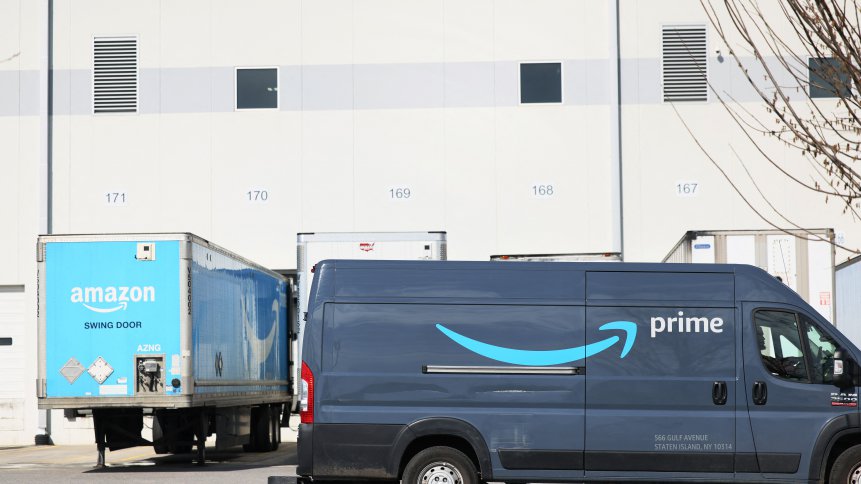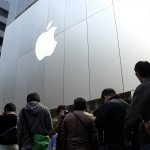Apple, Intel, Amazon foresee bumpy ride ahead with supply chain woes

- Chip shortfalls, and recent Covid-19 lockdowns are expected to squeeze the coming quarter’s earnings for both Apple and Amazon
- Intel too foresees supply-chain bottlenecks hurting its customers as lockdowns in China continue
- Amazon’s worse-than-expected performance is also attributed to supply chain issues, elevated staffing costs & inflation
It’s earnings reporting season once again, and while US tech titans amassed in billions of dollars in earnings — in line with lowered expectations — they seemed to have been immune to a host of economic challenges, including rising inflation, higher fuel and labor costs, not to mention the lingering global supply chain snarls. Looking ahead, tech giants including Apple, Amazon, Intel among others foresee even more challenges that could possibly impede their growth further.
At this point, market analysts share a consensus that, while uncertainty levels remain high, supply chain conditions are set to improve. However, not everyone shares the same stance. In fact, Apple chief executive Tim Cook reiterated in an earnings call yesterday that “the challenges we are seeing from supply chain disruptions [are] driven by both Covid and silicon shortages, to the devastation from the war in Ukraine.”
He insisted that Apple “are not immune to these challenges” — and the feeling is mutual among other tech giants. General Electric (GE), for instance, shared that the lockdowns stemming from China’s zero-Covid strategy have worsened its supply chain strains — and foresees its full-year results to come in at the low end of its previous expectations.
Apple foresees lesser talk about “record” numbers due to China
For starters, Apple’s CFO Luca MaestriHe told analysts that supply-chain issues that result in the shortages of products — from the iPhone to Macs — would hurt sales in the current quarter by between US$4 billion to US$8 billion, “substantially larger” than the hit in the second quarter.
For the quarter ended March, revenue at Apple rose 9%, which was “better than we anticipated,” according to Cook. It was the tech giant’s best March quarter yet, with revenues of US$97.3 billion, but still a dropoff from its results last quarter, where it broke all-time records with revenues of US$123.9 billion.
However, chip shortages seemed to have hurt iPad sales, which were flat. Yet Apple managed to lift Mac sales by 14%, despite supply constraints, a sign of how popular the M1 chip-powered MacBooks are. All in all, as pundits claim, Apple performed fine in the March quarter, but we can expect less talk about “record” performances on the July conference call. As for now, global supply constraints remained a big point of focus on the question-and-answer portion of the recent earnings call.
When asked about the long lead time on Mac products, Cook cited Covid-related disruptions in China and the ongoing silicon shortage as contributing to the issue. “We’re not really forecasting when we can be out of the silicon shortage,” he said, adding, “I think the Covid piece of it — I hope it is a transitory kind of issue and so I would hope that it would get better over time.”
Intel too foresees a gloomy quarter ahead
Even chipmaker Intel expects a lower-than-expected Q2 revenue and profit margin, mainly due to weak demand in its largest market, PCs, and increased supply-chain uncertainty due to the lockdowns in China. In fact, rising inflation, the resurgence of Covid-19 in China, and uncertainties around the war in Ukraine have impacted Intel as consumers turned tepid on purchases.
Chief Executive Pat Gelsinger told Reuters that they “are expecting that Shanghai does open up fairly soon, but that does moderate our outlook a little bit on Q2.” In fact he said it doesn’t change any perspective on the year, “which we think as we go into the second half, you have more PC demand.”
He also foresees supply-chain bottlenecks due to China’s lockdowns to hurt Intel’s customers, which in turn would affect the chip maker’s business. For the first quarter of this year, revenue at Intel’s Client Computing Group, which supplies PC makers and is the largest contributor to the company’s revenue, fell 13% to US$9.3 billion.
Prior to the earnings call this week, Intel’s EMEA MD, communication service providers, Robert Prince, during the Red Hat roundtable in London detailed a €33 billion investment to tackle supply chain problems in the semiconductor industry in Europe.
“This is going across the whole supply chain, so we hopefully can help balance that global supply chain around semiconductors. So, not just manufacturing, but … bringing in some of the later node technologies into Europe, which we haven’t had for many years,” Prince added.
Like Apple, Amazon is grappling with supply chain issues
As with Apple, Amazon also foresees weaker-than-expected sales for the second quarter after recording its slowest-ever revenue growth in the first quarter. The worse-than-expected performance came as the company grappled with supply chain issues, elevated staffing costs, and inflation. Amazon had aggressively expanded during the pandemic but that has unfortunately left the e-commerce giant overstaffed with excess capacity.
For the period between January and March, sales at Amazon’s online stores segment came in at US$51.1 billion, down from US$52.9 billion in the same period last year. Operating income of US$3.7 billion in the first quarter, compared with US$8.9 billion last year. The overall revenue stood at US$116.4 billion for the quarter, 7% higher than last year.
That said, Amazon’s chief financial officer Brian Olsavsky said that the company is going to pull back on the aggressive expansion in warehousing space during the pandemic, suggesting it had overextended on adding capacity.










